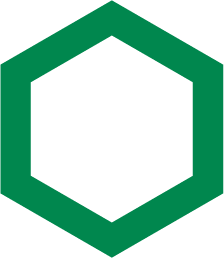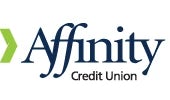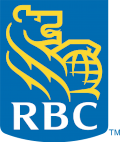Market-Linked GICs in Canada
Best Market-Linked GIC Rates in Canada
Cumulative Return as of November 2024
| Canadian Equities | |||
|---|---|---|---|
| Provider | 2-Year | 3-Year | 5-Year |
Scotiabank Canadian Top 60 | -- | 3% - 20% | 9.5% - 30% |
Meridian Canadian Diversified | -- | 6% - 20% | 9% - 45% |
First Ontario Canadian | -- | 4% - 25% | 8% - 40% |
Desjardins Canadian Market | -- | -- | 0% - 51% |
National Bank Canadian Sustainable | -- | 0% - 20% | 0% - Unlimited |
CIBC Canadian Market | -- | 0% - 18% | -- |
Affinity Credit Union Canadian Diversified | -- | 1% - 30% | 1% - 50% |
| U.S. Equities | |||
|---|---|---|---|
| Provider | 2-Year | 3-Year | 5-Year |
Scotiabank U.S. Top 500 | 2.5% - 8.5% | 2.5% - 14% | 7.75% - 23% |
TD U.S. Top 500 | -- | 2.5% - 17% | 7.5% - 25% |
RBC U.S. MarketSmart | 2% - 8% | 2.5% - 17% | 7.5% - 25% |
Desjardins American Market | -- | -- | 0% - 51% |
| Canadian Banks | |||
|---|---|---|---|
| Provider | 2-Year | 3-Year | 5-Year |
Meridian Financial Services | -- | 6% - 20% | 9% - 45% |
TD Canadian Banks | -- | 7% - 22% | 15% - 32% |
Affinity Credit Union Financial Services | -- | 1% - 30% | 1% - 50% |
RBC Canadian Banking | 3.5% - 12% | 6% - 22% | 12% - 32% |
CIBC Canada Banks | 3% - 12% | 4.5% - 18% | 10% - 30% |
CIBC Canadian Financials | 0% - 12% | 0% - 18% | 0% - 30% |
BMO Select | -- | 1.5% - 21% | -- |
BMO Blue Chip | -- | -- | 5% - 50% |
Desjardins Financial Services | -- | -- | 5% - 50% |
National Bank Canadian Banks Flex | -- | -- | 5% - 50% |
| Canadian Utilities | |||
|---|---|---|---|
| Provider | 2-Year | 3-Year | 5-Year |
Scotiabank Canadian Utilities | 2% - 12% | 4% - 23% | 10% - 50% |
TD Canadian Banking & Utilities | -- | 5.5% - 30% | 13% - 50% |
RBC Canadian Utilities | 2.5% - 15% | 4.5% - 30% | 12% - 40% |
BMO Fund Linked | -- | -- | 7.5% - 40% |
Market-Linked GIC rates shown above are based on minimum and maximum cumulative interest for the full term and are current as of November 2024.
What is a Market-Linked GIC?
The content below, excluding GIC rates, was last updated on: September 15th, 2023
Market-linked GICs are a twist on regular guaranteed investment certificates (GICs). Market-linked GICs, also called equity-linked GICs, allow you to gain exposure to the stock market while your initial investment remains fully protected. This means that you can’t lose any money on your investment! Market-linked GICs are a good choice for people who want to invest in the stock market but are risk-averse, yet want the possibility of higher returns than a fixed-rate GIC.
How Do Market-Linked GICs Work?
With a market-linked GIC, your investment is linked to the performance of a specific stock index, such as the S&P/TSX 60 Index for Canadian Equities or the S&P 500 for U.S. Equities. There are also other indices that a market-linked GIC can follow as well, such as the performance of a group of Canadian banks or utilities. If the index goes up, your investment will increase in value through a higher GIC interest rate. If the index goes down, you won't lose any money. However, it also means that you won't earn any interest.
The return that you receive relative to the performance of the index is based on your GIC's participation rate. Most market-linked GICs have a participation rate of 100%, but some may offer participation rates as high as 125% or more. This means that for every increase or decrease in the performance of the index, your GIC will rise or fall by that amount, multiplied by the participation rate. For example, if you have a market-linked GIC with a participation rate of 80% and the index it is linked to increases by 10%, your investment will grow by 8%.
CDIC Coverage for Market-Linked GICs
Even though stocks, bonds, and mutual funds are not covered by the CDIC, market-linked GICs are eligible for CDIC coverage of up to $100,000 per participating financial institution. That’s because market-linked GICs are still considered to be term deposits, even though they follow the returns of stocks, bonds, or other investments. This means that your principal and interest is fully protected and insured by the federal government in the event of a bank failure.
Market-linked GICs have a set term, with a typically longer-term than regular GICs. Most market-linked GICs have a term ranging from 3 years to 5 years. At the end of the term, you will receive your initial investment plus any gains that have been made. If the market has gone down, you will still get your original investment back, guaranteed. Market-linked GICs are still eligible for CDIC deposit coverage.
Canada’s major banks all offer market-linked GICs. They’re available in multiple term lengths, such as 5-year GICs, but they are usually non-redeemable GICs. Below, we’ll take a look at how market-linked GICs work, how returns are calculated, and compare a few popular market-linked GIC providers in Canada.
Market-Linked GICs vs. Fixed-Rate GICs
What’s the difference between a market-linked GIC and a fixed-rate GIC? With a fixed-rate GIC, the interest rate is set for the entire term of the investment. You’ll also know what the interest rate will be before you buy into the GIC. With a market-linked GIC, the interest rate can change over time, but is usually guaranteed not to go below a certain minimum. The interest rate is variable based on the underlying index, with a set maximum cap placed on how high the cumulative return can be.
Fixed-Rate
With a fixed-rate GIC, you know exactly how much interest you will earn on your investment over the term of the GIC. This can be helpful if you are planning for specific financial goals, such as saving for a down payment on a house. However, you’re locked into your set interest rate for the term of your GIC with a non-redeemable. This means that you might miss out on earning higher returns if market rates rise during your term.
Fixed-rate GICs can also be cashable or redeemable. With a cashable/redeemable GIC, you can withdraw some or all of the money from the GIC before maturity. However, they have much lower interest rates compared to non-redeemable GICs.
Market-Linked
With a market-linked GIC, your interest rate will fluctuate along with your chosen market index. This means that you could earn more or less interest than you would with a fixed-rate GIC, depending on the performance of the market.
Most market-linked GICs have a guaranteed minimum interest rate, so you know that you will earn at least a certain amount of interest over the term of your investment. However, this minimum rate will be lower than what you would have had otherwise earned with a comparable fixed-rate GIC for the same term. For some market-linked GICs, the guaranteed minimum interest might even be zero. This means that it’s possible to not earn any money at all if the market index stays the same or decreases over the length of your term.
Market-linked GICs are also non-redeemable, which means that you can’t withdraw or cash-out from your GIC early. Since term lengths can be lengthy, with many market-linked GICs being five years, you will need to be sure that you can afford to keep your money invested for the entire term.
Market-Linked GICs in a Registered Account
Market-linked GICs can be held in registered accounts, such as RRSPs, TFSAs, RESPs, RDSPs, and RRIFs. By holding a market-linked GIC in a registered account, you will be able to benefit from the account’s tax-advantaged status, such as no tax at all in the case of a Tax-Free Savings Account (TFSA).
This allows you to “invest” in the stock market without risking your principal. Since there’s no possibility of losing any money, you won’t have to worry about permanently losing your TFSA contribution room or other contribution limit, which a realized loss would otherwise do.
Best Market-Linked GICs in Canada
RBC's equity-linked GICs require a minimum investment of $1,000 and are available in terms of 2, 3, or 5 years. The exceptions are the RBC Canadian Market-Linked GIC, which is only available in 3-year terms, and the RBC ESG Market-Linked GIC, which has terms of either 4 years or 6 years.
These two GICs also have no minimum guaranteed return, but in exchange for this, they also have unlimited return potential. RBC’s other equity-linked GICs have a minimum and maximum cumulative return. All RBC equity-linked GICs are eligible for CDIC coverage and can be held in registered accounts, such as RRSPs, TFSAs, and RESPs.
RBC offers six types of market-linked GICs:
- RBC North American MarketSmart
- RBC Canadian Banking MarketSmart
- RBC Canadian Utilities MarketSmart
- RBC Canadian Market-Linked
- RBC U.S. MarketSmart
- RBC ESG Market-Linked
Comparing RBC Market-Linked GICs
| GIC | Index | Minimum Return | Maximum Return |
|---|---|---|---|
| RBC North American MarketSmart | 20 North American Companies | 2 Year: 3% 3 Year: 5% 5 Year: 12% | 2 Year: 12% 3 Year: 22% 5 Year: 32% |
| RBC Canadian Banking MarketSmart | S&P/TSX Banks Index | 2 Year: 3.5% 3 Year: 6% 5 Year: 12% | 2 Year: 12% 3 Year: 22% 5 Year: 32% |
| RBC Canadian Utilities MarketSmart | S&P/TSX Capped Utilities Sector Index | 2 Year: 2.5% 3 Year: 4.5% 5 Year: 12% | 2 Year: 15% 3 Year: 30% 5 Year: 40% |
| RBC U.S. MarketSmart | S&P 500 Index | 2 Year: 2% 3 Year: 2.5% 5 Year: 7.5% | 2 Year: 8% 3 Year: 17% 5 Year: 25% |
| RBC Canadian Market-Linked | S&P/TSX 60 Index | 3 Year: 0% | 3 Year: Unlimited |
| RBC ESG Market-Linked | MSCI World ESG Quality Select Low Volatility 8% Risk Control 3% Decrement Index | 4 Year: 0% 6 Year: 0% | 4 Year: Unlimited 6 Year: Unlimited |
Note: Data is current as of November 2024
Instead of having a minimum and maximum return, the RBC Canadian Market-Linked and ESG Market-Linked GICs have an unlimited return cap. Instead, the return is largely linked to their participation factors. For the Canadian Market-Linked GIC, the participation factor is 110%. This means that if the S&P/TSX 60 Index went up 50% over the 3-year term, the return of the GIC would be 55%.
RBC does have an early return lock-in option for some GICs. For example, RBC's Canadian Market-Linked GIC can be locked-in on the GIC's second anniversary. This means that you can have the accumulated return paid out early after two years. Your GIC principal will still be locked until it is paid out at maturity.
TD’s market-linked GICs require a minimum investment of $1,000 for non-registered accounts and TFSAs, and a minimum of just $500 for RRSPs, RESPs, and RRIFs. TD only offers three types of market-linked GICs, each with a term of either three years or five years. Interest is paid at maturity.
Read about other GICs offered by TD Bank.
Comparing TD Market-Linked GICs
| GIC | Index | Minimum Return | Maximum Return |
|---|---|---|---|
| TD U.S. Top 500 GIC | S&P 500 Index | 3 Year: 2.5% 5 Year: 7.5% | 3 Year: 17% 5 Year: 25% |
| TD Canadian Banks GIC | S&P/TSX Bank Index | 3 Year: 7% 5 Year: 15% | 3 Year: 22% 5 Year: 32% |
| TD Canadian Banking & Utilities GIC | 50% S&P/TSX Bank Index + 50% S&P/TSX Capped Utilities Index | 3 Year: 5.5% 5 Year: 13% | 3 Year: 30% 5 Year: 50% |
Note: Data is current as of November 2024
Scotiabank, along with CIBC, offers the lowest minimum investment requirement for non-registered market-linked GICs among the major Canadian banks, starting at just $500. These GICs are available with terms of 2, 3, and 5 years. They are also offered for registered plans, maintaining the same $500 minimum investment.
Comparing Scotiabank Market-Linked GICs
| GIC | Index | Minimum Return | Maximum Return |
|---|---|---|---|
| Scotiabank Canadian Top 60 | S&P/TSX 60 Index | 3 Year: 3% 5 Year: 9.5% | 3 Year: 20% 5 Year: 30% |
| Scotiabank U.S. Top 500 | S&P 500 Index | 2 Year: 2.5% 3 Year: 2.5% 5 Year: 7.75% | 2 Year: 8.5% 3 Year: 14% 5 Year: 23% |
| Scotiabank Canadian Low Volatility Index | S&P/TSX Composite Low Volatility Index | 2 Year: 2% 3 Year: 4% 5 Year: 10% | 2 Year: 10% 3 Year: 15% 5 Year: 24% |
| Scotiabank Canadian Utilities | S&P/TSX Capped Utilities Index | 2 Year: 2% 3 Year: 4% 5 Year: 10% | 2 Year: 12% 3 Year: 23% 5 Year: 50% |
Note: Data is current as of November 2024
BMO Progressive GIC Series contains market-linked and fund-linked GICs. BMO offers eight different types with a wide variety of investment choices. The minimum investment is $1,000, and your principal is also automatically invested into a BMO Short-Term Investment Certificate (STIC) while you wait for the market-linked GIC issue date. This means that your money will start earning interest immediately while you are waiting for the market-linked GIC to be bought.
Comparing BMO Market-Linked GICs
| GIC | Index | Minimum Return | Maximum Return |
|---|---|---|---|
| BMO Fund Linked GIC | 50% BMO Equal Weight Utilities Index ETF + 50% BMO Equal Weight Banks Index ETF | 5 Year: 7.5% | 5 Year: 40% |
| BMO Growth GIC | 15 Large-Cap Canadian Companies | 4 Year: 2% | 4 Year: 36% |
| BMO Blue Chip GIC | Canada’s 5 Major Banks | 5 Year: 5% | 5 Year: 50% |
| BMO Return Enhancing GIC | 50% S&P/TSX Capped Financials Index + 50% S&P/TSX Capped Utilities Index | 3 Year: 3% | 3 Year: 18% |
| BMO Smart Return GIC | 50% S&P/TSX Capped Financials Index + 50% S&P/TSX Capped Utilities Index | 4 Year: 4% | 4 Year: 28% |
| BMO Select GIC | S&P/TSX Banks Index | 3 Year: 1.5% | 3 Year: 21% |
| BMO Canadian Market GIC | S&P/TSX 60 ESG Index | 6 Year: 6% | 6 Year: 42% |
| BMO Top Performing Portfolio GIC | Best of Three Portfolios, based on S&P/TSX 60, Banks Index, Capped Utilities Index, and S&P 500 | 6 Year: 3% | 6 Year: 42% |
Note: Data is current as of November 2024
CIBC’s market-linked GICs are sold through CIBC Capital Markets as structured notes. They have a minimum investment of just $500, are non-redeemable, and can be held in non-registered accounts, RRSPs, and TFSAs.
Reference portfolios can change. In November 2024, CIBC’s Market Return GIC was based on a reference portfolio of Royal Bank of Canada, Enbridge, TELUS, Volkswagen AG, BASF, Johnson & Johnson, AT&T, Microsoft, Orange, and Mercedes-Benz Group.
Read about other GICs offered by CIBC.
Comparing CIBC Market-Linked GICs
| GIC | Index | Minimum Return | Maximum Return |
|---|---|---|---|
| CIBC Canada Bank | Solactive Canada Bank 57 AR Index | 2 Year: 3% 3 Year: 4.5% 5 Year: 10% | 2 Year: 12% 3 Year: 18% 5 Year: 30% |
| CIBC Canadian Financials Market | Solactive Canada Bank Index | 2 Year: 0% 3 Year: 0% 5 Year: 0% | 2 Year: 12% 3 Year: 18% 5 Year: 30% |
| CIBC Canadian Market Return | S&P/TSX 60 | 2 Year: 0% 3 Year: 0% | 2 Year: 18% 3 Year: 24% |
| CIBC Index Growth | Solactive Renaissance Walter Scott Equity Fund Index AR | 2 Year: 0% 3 Year: 0% 5 Year: 0% | 2 Year: 12% 3 Year: 18% 5 Year: 30% |
| CIBC Market Return | Royal Bank of Canada, Enbridge, TELUS, Volkswagen AG, BASF, Johnson & Johnson, AT&T, Microsoft, Orange, Mercedes-Benz Group | 3 Year: 0% 5 Year: 0% | 3 Year: 18% 5 Year: 30% |
| CIBC Floating Market Rate | Compounded CORRA | 2 Year: 3.4% 3 Year: 3.45% 5 Year: 3.5% | 2 Year: 3.65% 3 Year: 3.7% 5 Year: 3.75% |
Note: Data is current as of November 2024
Participation Rate
The participation rate of a market-linked GIC is the actual return that you will receive based on your underlying reference portfolio or index. A common participation rate is 100%. This means that you will receive 100% of the returns of the index, up to the GIC’s maximum allowed return. Some GICs might even have no maximum return. In those cases, the maximum returns may be limited by the participation factor. For example, if a GIC has a participation rate of 90% and the underlying index yields a 10% return, the return on the GIC would be 9%.
Some market-linked GICs have a participation rate of over 100%. For example, as of November 2024, CIBC Market Return GIC has a participation rate of 200% for a 5-year term, with an unlimited return cap. This means that the returns of the underlying index are magnified. If the index grew by 10%, you’ll be earning 20%. Since you can’t lose any money with a GIC, this leverage works in your favour!
Do I Receive Dividends With a Market-Linked GIC?
No, you do not receive stock dividends or distributions with a market-linked GIC, even if the underlying index or stocks pays out dividends. This means that your market-linked GIC’s return might be lower than the total return that you would have gained had you held those stocks or indices directly, besides the maximum return limit imposed by most GIC providers.
Minimum and Maximum Returns
Market-linked GICs usually have a minimum and maximum return. It’s often stated as a cumulative return for the entire term. For example, the TD Canadian Banks GIC has a minimum return of 15% for a five-year term. That's equivalent to an actual return of 2.83% per year, considering annual compounding interest. In comparison, current GIC rates for a 5-year term are well over 3%, with some over 4%. You’re giving up a higher fixed return from a 5-year GIC in exchange for the possibility of a higher maximum return.
Some GICs have no minimum return. In that case, you might earn zero interest if the index had a negative or zero return over the life of your GIC. You might have still earned some interest during the time that you invested in the GIC but before the actual issue date of the GIC. That’s because market-linked GICs are structured notes, and you’ll need to wait for the GIC's actual issue date. Your bank might automatically invest your funds into a short-term GIC in the meantime at an interim interest rate.
How Have Market-Linked GICs Performed?
Market-linked GICs generally underperform when compared to investing in the stock market as a whole. If you’re willing to take on a bit more risk, an index Canadian ETF, such as the S&P/TSX Composite Index or the S&P 500, would offer better returns over a longer period of time. When the stock market is doing well, market-linked GICs often reach their maximum return limits. This will cause you to lose out on potential returns. However, there have been times when market-linked GICs have performed better than the stock market.
Since market-linked GICs are issued as structured notes, you can view their current and past performance to see the types of returns they experienced compared to their underlying index. The Scotiabank Canadian Top 60 GIC yielded better 3-year returns than the Scotiabank U.S. Top 500 GIC for 2024 maturity. However, you would have done considerably better by directly investing in an S&P/TSX 60 ETF rather than a Scotiabank Canadian Top 60 GIC.
Scotiabank Canadian Top 60 GIC - Historical Performance (3-Year)
| Matured On | S&P/TSX 60 Index Return | GIC Minimum Return | GIC Maximum Return | GIC Actual Return Paid |
|---|---|---|---|---|
| November 16, 2024 | 15.43% | 0.15% | 5.00% | 5.00% |
| October 19, 2024 | 17.70% | 0.15% | 4.50% | 4.50% |
| September 14, 2024 | 14.62% | 0.15% | 4.50% | 4.50% |
| August 10, 2024 | 8.17% | 0.15% | 4.50% | 4.50% |
| July 13, 2024 | 10.77% | 0.15% | 4.50% | 4.50% |
| June 8, 2024 | 10.97% | 0.15% | 4.50% | 4.50% |
| May 11, 2024 | 16.84% | 0.15% | 4.00% | 4.00% |
| April 13, 2024 | 14.92% | 0.15% | 4.00% | 4.00% |
Source: Scotiabank
The Scotiabank U.S. Top 500 GIC follows the return of the S&P 500 index. The S&P 500 had 3-year returns well over 20% for most part of 2024. Meanwhile, the maximum return for the GIC was 4%. This meant you only received a quarter or even less, of the return of the S&P 500 index.
Scotiabank U.S. Top 500 GIC - Historical Performance (3-Year)
| Matured On | S&P 500 Index Return | GIC Minimum Return | GIC Maximum Return | GIC Actual Return Paid |
|---|---|---|---|---|
| November 16, 2024 | 26.46% | 0.15% | 4.00% | 4.00% |
| October 19, 2024 | 30.64% | 0.15% | 3.50% | 3.50% |
| September 14, 2024 | 25.08% | 0.15% | 3.50% | 3.50% |
| August 10, 2024 | 19.24% | 0.15% | 3.50% | 3.50% |
| July 13, 2024 | 28.08% | 0.15% | 3.50% | 3.50% |
| June 8, 2024 | 26.27% | 0.15% | 3.50% | 3.50% |
| May 11, 2024 | 26.79% | 0.15% | 3.50% | 3.50% |
| April 13, 2024 | 24.67% | 0.15% | 3.50% | 3.50% |
Source: Scotiabank
The Scotiabank Canadian Low Volatility Index returned 3.63% for its November 2024 maturity. That was below the maximum return of 5.50%, which meant that the GIC paid out 3.43%. Meanwhile, the index returned -4.15% and -2.98% for their August and July 2024 maturities. This meant an actual return being paid based on the GIC's minimum return of 3.50%, with the GIC not losing any money even though the index had negative returns. This is a case where the GIC’s guarantee, and minimum return, were beneficial.
Scotiabank Canadian Low Volatility Index - Historical Performance (3-Year)
| Matured On | S&P/TSX Composite Low Volatility Index Return | GIC Minimum Return | GIC Maximum Return | GIC Actual Return Paid |
|---|---|---|---|---|
| November 16, 2024 | 3.63% | 0.35% | 4.00% | 3.63% |
| October 19, 2024 | 5.97% | 0.35% | 3.50% | 3.50% |
| September 14, 2024 | 1.71% | 0.35% | 3.50% | 1.71% |
| August 10, 2024 | -4.15% | 0.35% | 3.50% | 0.00% |
| July 13, 2024 | -2.98% | 0.35% | 3.50% | 0.00% |
| June 8, 2024 | -2.36% | 0.35% | 3.50% | 0.00% |
| May 11, 2024 | -0.81% | 0.35% | 3.50% | 0.00% |
| April 13, 2024 | -4.31% | 0.35% | 3.50% | 0.00% |
Source: Scotiabank
*Based on minimum cumulative return
Disclaimer:
- Any analysis or commentary reflects the opinions of WOWA.ca analysts and should not be considered financial advice. Please consult a licensed professional before making any decisions.
- The calculators and content on this page are for general information only. WOWA does not guarantee the accuracy and is not responsible for any consequences of using the calculator.
- Financial institutions and brokerages may compensate us for connecting customers to them through payments for advertisements, clicks, and leads.
- Interest rates are sourced from financial institutions' websites or provided to us directly. Real estate data is sourced from the Canadian Real Estate Association (CREA) and regional boards' websites and documents.









